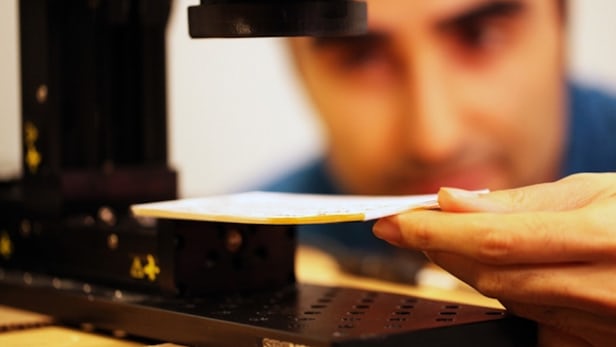
Breaking News
 The Silver Shift: Why Stackers Are DUMPING 90% Silver & Buying SilverBitz!
The Silver Shift: Why Stackers Are DUMPING 90% Silver & Buying SilverBitz!
 Eye-bouncing - #SolutionsWatch
Eye-bouncing - #SolutionsWatch
 'Targeted, Antisemitism': 16 Dead, 38 Injured After Father & Son Terrorists Attack...
'Targeted, Antisemitism': 16 Dead, 38 Injured After Father & Son Terrorists Attack...
 The #1 Most Dangerous Fat in the World!
The #1 Most Dangerous Fat in the World!
Top Tech News
 This tiny dev board is packed with features for ambitious makers
This tiny dev board is packed with features for ambitious makers
 Scientists Discover Gel to Regrow Tooth Enamel
Scientists Discover Gel to Regrow Tooth Enamel
 Vitamin C and Dandelion Root Killing Cancer Cells -- as Former CDC Director Calls for COVID-19...
Vitamin C and Dandelion Root Killing Cancer Cells -- as Former CDC Director Calls for COVID-19...
 Galactic Brain: US firm plans space-based data centers, power grid to challenge China
Galactic Brain: US firm plans space-based data centers, power grid to challenge China
 A microbial cleanup for glyphosate just earned a patent. Here's why that matters
A microbial cleanup for glyphosate just earned a patent. Here's why that matters
 Japan Breaks Internet Speed Record with 5 Million Times Faster Data Transfer
Japan Breaks Internet Speed Record with 5 Million Times Faster Data Transfer
 Advanced Propulsion Resources Part 1 of 2
Advanced Propulsion Resources Part 1 of 2
 PulsarFusion a forward-thinking UK aerospace company, is pushing the boundaries of space travel...
PulsarFusion a forward-thinking UK aerospace company, is pushing the boundaries of space travel...
 Dinky little laser box throws big-screen entertainment from inches away
Dinky little laser box throws big-screen entertainment from inches away
 'World's first' sodium-ion flashlight shines bright even at -40 ºF
'World's first' sodium-ion flashlight shines bright even at -40 ºF
Terahertz radiation could help us read closed books

In their recent study, the team tested the system using a stack of papers with one letter printed on each and found that it could correctly identify those written on the top nine sheets.
The new system takes advantage of terahertz radiation – the band of electromagnetic radiation that lies between microwaves and infrared light on the electromagnetic spectrum. Although other wave types – such as X-rays – can also penetrate surfaces, the team chose to use terahertz radiation because it can differentiate between ink and blank paper in a way that X-rays cannot. This stems from the fact that different chemicals absorb different terahertz frequencies to varying degrees, giving each chemical – such as those used in ink and paper – a unique frequency signature.
MIT algorithms designed to capture images from each paper use this absorption difference to make the characters as clear as possible. Afterwards, algorithms developed by Georgia Tech were able to interpret the often-distorted images as letters.



